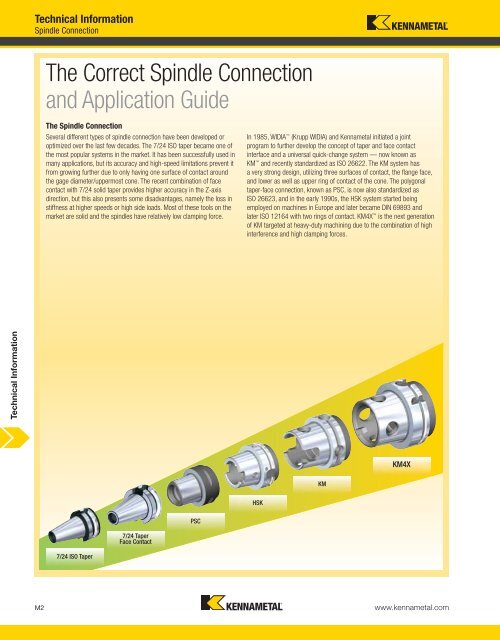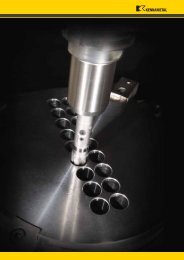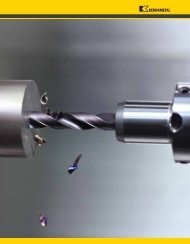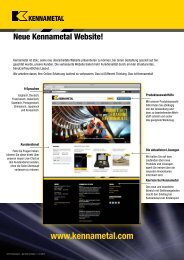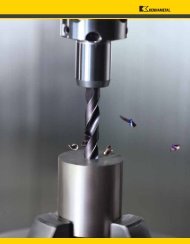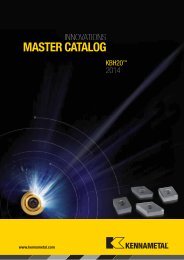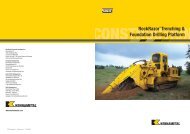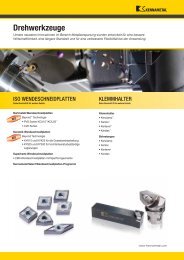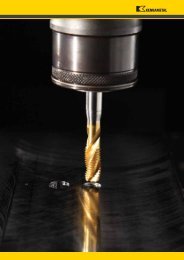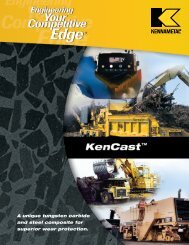You also want an ePaper? Increase the reach of your titles
YUMPU automatically turns print PDFs into web optimized ePapers that Google loves.
<strong>Technical</strong> <strong>Information</strong><br />
<strong>Technical</strong> <strong>Information</strong><br />
Spindle Connection<br />
The Correct Spindle Connection<br />
and Application Guide<br />
The Spindle Connection<br />
Several different types of spindle connection have been developed or<br />
optimized over the last few decades. The 7/24 ISO taper became one of<br />
the most popular systems in the market. It has been successfully used in<br />
many applications, but its accuracy and high-speed limitations prevent it<br />
from growing further due to only having one surface of contact around<br />
the gage diameter/uppermost cone. The recent combination of face<br />
contact with 7/24 solid taper provides higher accuracy in the Z-axis<br />
direction, but this also presents some disadvantages, namely the loss in<br />
stiffness at higher speeds or high side loads. Most of these tools on the<br />
market are solid and the spindles have relatively low clamping force.<br />
7/24 ISO Taper<br />
7/24 Taper<br />
Face Contact<br />
PSC<br />
In 1985, WIDIA (Krupp WIDIA) and Kennametal initiated a joint<br />
program to further develop the concept of taper and face contact<br />
interface and a universal quick-change system — now known as<br />
KM and recently standardized as ISO 26622. The KM system has<br />
a very strong design, utilizing three surfaces of contact, the flange face,<br />
and lower as well as upper ring of contact of the cone. The polygonal<br />
taper-face connection, known as PSC, is now also standardized as<br />
ISO 26623, and in the early 1990s, the HSK system started being<br />
employed on machines in Europe and later became DIN 69893 and<br />
later ISO 12164 with two rings of contact. KM4X is the next generation<br />
of KM targeted at heavy-duty machining due to the combination of high<br />
interference and high clamping forces.<br />
M2 www.kennametal.com<br />
HSK<br />
KM<br />
KM4X


